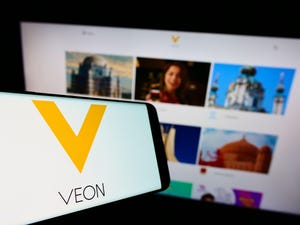Germany proposes strict curbs on Huawei
Rules drawn up by German officials may require Deutsche Telekom, Telefónica and Vodafone to remove all Chinese 5G products by October 2026.

Relying on a Russian thug for energy supplies no longer appeared very sensible to Germany's government after Vladimir Putin sent Russian troops into Ukraine. Similar dependence by Germany's telcos on Huawei has looked just as risky to opponents of the Chinese equipment vendor. If Putin could turn off the Nordstream gas taps in response to German sanctions, an increasingly belligerent Chinese government could surely order Huawei to cut off 5G networks, they argued.
Authorities seem to have listened. A strategy paper shared by German officials with local reporters this week warns of a Nordstream moment for telecom if operators do not disengage from Huawei and switch to alternative 5G vendors. It could be a costly and disruptive process for Deutsche Telekom, Telefónica and Vodafone, which grew heavily reliant on Huawei when they were building 4G networks. Despite the admonitions of the European Union, that reliance has continued. According to data from Strand Consult, a Danish consultancy, Huawei has supplied nearly 60% of the equipment used in Germany's 5G radio access networks (RAN).
Details of the proposed rules shared with Light Reading suggest the government has stopped making a distinction between this radio access network (RAN) technology and the 5G "core," the control center of the network. Any government concern was previously about the core, with the RAN believed to be a less critical or vulnerable part of the system. But authorities now want Huawei both removed from the 5G core and seriously restricted in the RAN, according to this week's paper.
If rules are enforced, any use of 5G core technology supplied by either Huawei or ZTE, a smaller Chinese vendor, will be forbidden starting on January 1, 2026. In a secondary phase, Deutsche Telekom, Telefónica and Vodafone will also have until October 2026 to ensure that no more than 25% of the RAN is managed by either Huawei or ZTE.
Operators will initially be expected to concentrate on removing Chinese products from networks in Berlin, Brandenburg, Cologne and Bonn, according to John Strand, the CEO of Strand Consult. The distinction is "arbitrary," he said in emailed comments sent to Light Reading. "It is not logical that only citizens and enterprises in major cities (5.1 million inhabitants) are prioritized for secure networks while the 79 million citizens in the rest of Germany are considered to live in safe or lower risk zones."
According to government papers seen by Light Reading, no more than 25% of network components must be managed by Chinese companies within three years. Given other details in the strategy paper, this restriction "could only apply to network management software," said Strand. "If this is the case, there are likely to be complications in the policy," he said, noting that any such 25% rule could be interpreted as a requirement either to strip out RAN components or merely change the management software. But managing Chinese hardware with another company's software would be difficult if not impossible.
Chinese takeout
The burden of replacing Huawei is likely to fall heaviest on Deutsche Telekom. The incumbent operator has raced to deploy 5G across Germany, boasting population coverage of about 95% earlier this year. At the time, its 5G network comprised as many as 24,000 sites and about 80,000 antennas. In the 4G era, Huawei accounted for about two thirds of Deutsche Telekom's RAN, with Ericsson serving the remainder. If the division of work is the same in 5G, with operators typically using the same vendor across both standards, Deutsche Telekom would have had about 15,600 Huawei-supplied sites, including 52,000 antennas.
Figures published by Telefónica put its number of 5G antennas earlier this year at 18,000. Given Strand Consult's data, it is likely that around half of these were supplied by Huawei. As for Vodafone, it had 36,000 5G antennas installed earlier this year and probably owed about 19,800 of these to Huawei. All this suggests the number of 5G antennas supplied to German operators by Huawei was more than 80,000 in March, and the figure may have risen since then.
Table 1: Germany's 5G rollout as of March 2023
Carrier | 5G antennas | Mid-band antennas | 5G sites | Mid-band 5G sites | Mobile sites | 5G pop coverage |
|---|---|---|---|---|---|---|
DT | 80,000 | 7,700 | 24,000 | 2,600 | 34,000 | 94.8% |
Telefónica | 18,000 | n/a | n/a | n/a | 28,000 | 75% |
Vodafone | 36,000 | n/a | 12,000 | 1,600 | 26,000 | 80% |
(Source: Companies, media reports)
The cost of stripping out Huawei products before they have reached their natural expiration date was estimated to be roughly €2.5 billion (US$2.7 billion) in a Barclays research note published in June. About €1.1 billion ($1.2 billion) of this would fall on Deutsche Telekom, with the remaining €1.4 billion ($1.5 billion) split evenly between Telefónica and Vodafone, said the bank, which noted that Deutsche Telekom normally spends about €300 million ($320 million) a year on RAN technology in Germany. One source dismissed suggestions that a two- or three-year timeline would be a challenge, pointing out that Deutsche Telekom switched from Nokia to Ericsson across a big chunk of its RAN in just 18 months.
An issue for all three operators will be finding alternatives. Ericsson and Nokia would be the natural options, but telco executives have previously expressed concern about strengthening a Nordic duopoly in the absence of Chinese vendors. It explains the interest in open RAN, where more interoperable technologies would supposedly allow an operator to build a mobile site with components from multiple suppliers instead of sourcing all products from one vendor's system.
The hope is that open RAN will buoy specialists, previously excluded from deals because they lacked a complete RAN portfolio. But technical niggles, and concerns about the cost and complexity of stitching together products supplied by different vendors, have hindered open RAN progress. At the start of this year, Deutsche Telekom admitted in a white paper that open RAN was still not ready for wide-scale deployment. It is hard to see that changing fast.
Read more about:
EuropeAbout the Author(s)
You May Also Like












